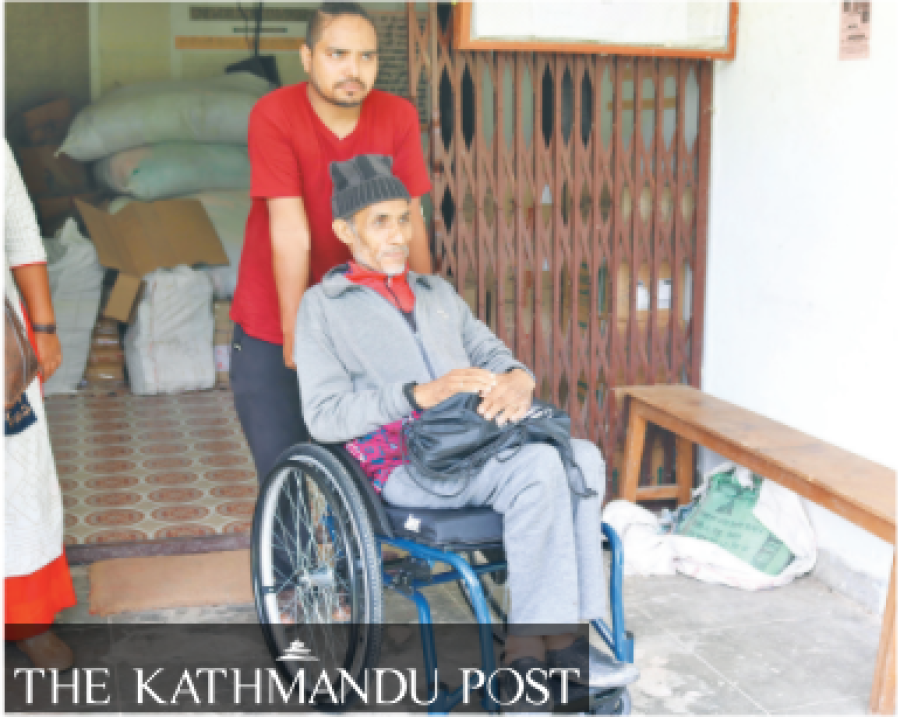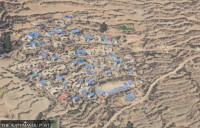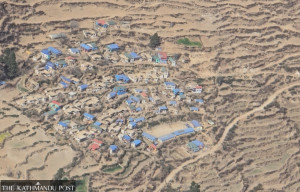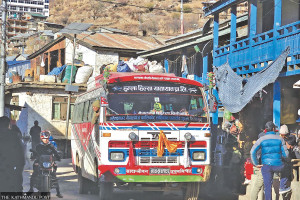Karnali Province
Government office buildings in Salyan are not disabled friendly
There are around 5,000 individuals living with disabilities in the district and most of them face difficulties in availing services from government offices.
Biplab Maharjan
Tok Lal Khadka uses a wheelchair to get around. The 55-year-old from Sharada Municipality in Salyan district says he has to visit banks and government offices regularly, but every visit for him is as painful as the last one.
“The bank where I visit to withdraw my social security allowance and government offices are not accessible for someone in a wheelchair,” he said. “Even the government office building that distributes ID cards for the disabled are not disabled friendly.”
According to him, one of his relatives had carried him on his back to the government office building that issued him his ID card four years ago.
The number of disabled people in Salyan runs up to a couple of thousands and all of them face difficulties in availing services from various government offices.
According to the data of the District Coordination Committee, there are around 5,000 individuals living with disabilities in the district. Among them, around 2,000 fall under A and B categories that classify them as individuals with physical disabilities with limited movement and speech among other impairments, the data showed.
Accessibility to most of the buildings functioning as government offices set by the local units is a challenge for the disabled.
“The government buildings have never been disabled friendly but with the federal structure, we were hoping for reforms. That hasn’t happened. Government buildings built in the last few years are also equally inaccessible for the disabled,” Krishna Budhathoki, chairman of the Disabled Welfare Association in Salyan, told the Post.
Since disabled people have difficulties visiting government offices alone, most rely on another person to accompany them.
“But since not everybody has people to help them, most disabled people in the district have not been able to avail government services,” said Budhathoki.
Neither the district administration nor the local units have taken steps to make infrastructure accessible to the disabled. Most government offices have been set up in crowded areas which further limit the movement of disabled people, says Budhathoki.
“The roads and bylanes leading to government offices have potholes and are in a sorry state. The poor road infrastructure also impedes the disabled from going to government offices to seek services due to them,” said Budhathoki.
Nokhiram Sunar, a local resident of Chhatreshwori Rural Municipality, was paralysed five years ago and has been wheelchair-bound since.
“I cannot walk easily to the government buildings. None of the government institutions including health centres is disabled friendly. I have to go to the health post building for medicines but it’s difficult for me to reach there on my own,” he said.
Nim Bahadur Nepali, a rights activist in Salyan, says disabled people from the rural areas of the district have been affected the most by the inaccessible infrastructure of government institutions.
“One person needs at least two to three helpers to take him to Khalanga, the district headquarters, to receive a service. That is why most disabled people do not want to make the journey from remote areas. They miss out on most of the services meant for them because of a lack of disabled-friendly infrastructure,” he said.
According to Nepali, most of the chiefs of the government offices have set up their offices on the higher flights of their office buildings. “How can you expect a disabled person to climb the stairs to meet the head of the office?” said Nepali.
Laxmidevi Humagain, chief district officer of Salyan, says the government is aware of the need for disabled-friendly infrastructure across all government platforms and that the district has kept the issue on high priority.
“All future government buildings will be disabled-friendly. We will make the changes gradually,” she said.




 5.4°C Kathmandu
5.4°C Kathmandu












%20(1).jpg&w=300&height=200)

